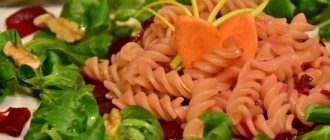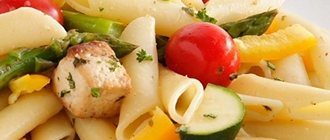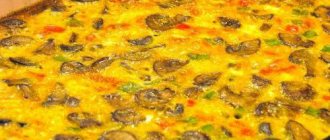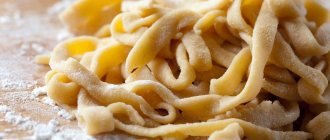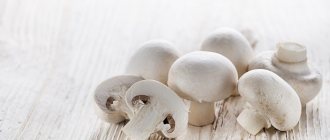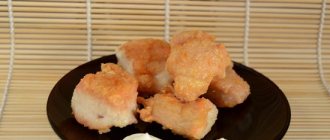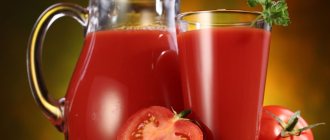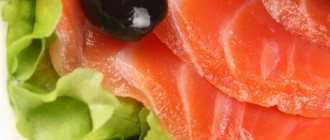Calorie content of pasta per 100 grams (boiled, hard, with cheese, etc.)
340 kcal, boiled:
175 kcal* * average value per 100 g, depends on the type of flour, type of pasta and cooking methods
Pasta is a popular dish characterized by its nutritional value and high energy value. Different types - spaghetti, noodles, pasta - are used to prepare casseroles, soups and cold appetizers.
How many calories are in 100 grams of pasta?
Pasta is not only tasty, but also a healthy product. Due to the content of vitamin B in products made from durum wheat, a person feels a surge of strength and energy for a long time. Amino acids help normalize sleep and mood, and fiber helps remove all harmful substances from the body and restores intestinal function.
The Italian product differs from the domestic one in composition. In the first case, only flour and water are used, in the second, eggs and butter are added.
Flour for making pasta can be of baking, hard, or glassy varieties. The first option is considered more beneficial for the body. Depending on the type, the calorie content of the product (dry) is 320-360 kcal. About the same numbers apply to buckwheat or white rice.
For your diet, it is better to choose products made from rice or buckwheat flour.
The products of the well-known brand “Makfa” (only durum wheat is used) have 345 kcal, the products do not become overcooked and keep their shape. Barilla has a higher figure - 360 kcal. Spaghetti, bows, lasagna sheets, feathers are distinguished by their excellent taste and high quality. Manufacturers can add tomatoes, spinach, carrots, spices and herbs to create beautiful and more savory pasta.
The nutritional value
Pasta made from durum wheat flour contains a large percentage of vitamin B1 in its composition.
This vitamin is very important for maintaining energy in the human body.
The amount of protein in this type of product is enough to remove the fat layer, not muscle mass.
This is an extremely useful property of protein, extremely useful for those who want to say goodbye to extra pounds forever.
But this factor applies only to boiled pasta, without the addition of fatty sauces, cheeses with a high percentage of fat, minced pork, etc.
The fewer calories there are in the menu, the lower the calorie content of the finished dish.
The number of calories in them, made from durum wheat flour, is: 443.45 kcal.
The nutritional value:
This flour contains less gluten than regular flour.
They do not get soggy and hold their shape well during the cooking process.
Calorie content of boiled Macfa pasta: 345 kcal.
The nutritional value:
Calorie content of boiled and fried pasta
The energy value of pasta depends not only on its type, but also on the products that are added during the cooking process. When cooking, the numbers decrease by more than 2 times (about 120 kcal per 100 grams). This is due to the increase in volume of products after boiling.
One standard serving of boiled pasta (150 g) contains 180 kcal.
Additives (butter, sauces, cheese, sour cream) significantly change the value of the finished dish. For boiled products with butter (2 tablespoons), the indicator will be almost 180 kcal per 100 g. Read about the properties and calorie content of butter here.
Nutritionists advise replacing animal oil with vegetable oil. In the homeland of pasta, olive oil is used; when it is added, the energy value is reduced by 20 units (160 kcal). Find out the calorie content of vegetable oils in our article. If you want to fry pasta in oil, you should pay attention to the high calorie content of the finished dish - more than 190 kcal.
Calorie content of pasta dishes
If you boil pasta and add cheese to it, you will get a fairly high-calorie dish (330 kcal) that is not suitable for dietary nutrition. You can reduce the indicator if you use low-fat varieties of dairy product in an amount of no more than 1 tablespoon. You can read about the calorie content of different types of cheese in our publication.
Popular dishes where pasta is the main ingredient:
- baked with egg – 152 kcal;
- with beef stew – 190 kcal;
- with minced meat (navy style) – 230 kcal;
- with pieces of beef – 215 kcal;
- noodle soup – 90 kcal;
- with chicken breast – 290 kcal;
- with Bolognese sauce – 200 kcal.
The most dietary option is durum spaghetti with the addition of vegetables or seafood. The value of such a dish will be only 110-120 kcal.
The quality of the paste, beneficial properties, and energy value depend on the varieties of cereal crops used and manufacturing technologies. During the diet, you should limit consumption to one small serving every 2-3 days.
How many calories are in pasta
Pasta is a common product used to make side dishes. It is believed that the product has a high calorie content, and therefore it should not be consumed during weight loss or to maintain weight if you are prone to obesity. However, knowing how many calories are in pasta , and cooking methods to reduce calories, you can eat pasta at lunchtime without restrictions.
Pasta is a flour product, but its variety today is so great that you can find lower-calorie varieties to eat during a diet. Next, types of pasta, cooking features in order to reduce calorie content, as well as examples with recipes will be presented in detail.
Types of pasta
Pasta is made from a dough using wheat flour and water. As a result, the product can be classified as complex carbohydrates necessary for the body due to prolonged saturation and energy production for normal life. Nutritionists do not recommend using varieties for quick cooking, but giving preference to pasta made from durum wheat. At the moment, pasta varies in composition, shape and even color.
Among the long varieties there are:
- vermicelli,
- spaghetti,
- spaghettini,
- fettuccine,
- capellini, etc.
Among the short pasta products, the following varieties are distinguished:
- tortiglioni,
- maccheroni,
- cavatappi, etc.
There are also curly varieties:
- farfalle (we call them “butterflies”),
- conchiglie (or “shells”),
- capeletti (similar to small Russian dumplings), etc.
As a result of the huge number of varieties, one can count more than 200 pasta dishes, the cooking features of which should be based on reducing calories in order to lose weight or maintain a slim body.
What are the benefits and harms?
In order for pasta to become one of the permitted products on the diet menu, the dish must be properly prepared and served. Whether the product will cause harm or benefit to the body depends on what type of pasta is used for preparation. Pasta made from durum wheat is distinguished by the presence of a large number of useful components.
They are a source of complex carbohydrates and contain:
- fiber, which improves the digestion process;
- vitamin B, which plays an important role in the functioning of the nervous system and metabolic processes;
- protein that provides long-lasting satiety;
- amino acid tryptophan;
- iron;
- nicotinic acid;
- vitamin E, which has a beneficial effect on the functioning of the reproductive system.
About the benefits of boiled pasta
Pasta is a high-carbohydrate product containing a huge amount of fiber. It cleanses the body of waste and toxins and helps speed up metabolism. Slow carbohydrates saturate the body for a long time, so you shouldn’t give up boiled pasta even on a diet.
Slow carbohydrates, which enter the human body in the form of boiled pasta, normalize blood sugar levels, causing long-term saturation. The dish can be eaten with a small amount of butter, or better yet, with sour cream sauce, to which spices and other herbs are added.
Practical tip: It is recommended to undercook the pasta, which adds additional flavor. Among other things, this type of cooked pasta is healthier and increases satiety.
About energy value
The paste contains about 400 kilocalories in 100 g of pure product. You can learn about BZHU - the content of proteins, fats and carbohydrates - from the instructions provided on the packaging. When losing weight, you need to count the calories that come from the dry amount of pasta. When boiled, they increase in size, so it is necessary to calculate the calorie content of the finished dish carefully and correctly.
The approximate calorie content of pasta made from durum wheat and others is presented in the table.
| product | energy value per 100 g |
| Boiled from durum wheat | 112 kcal |
| Boiled with butter | 135 kcal |
| Boiled buckwheat | 139 kcal |
| Boiled with mushrooms | 174 kcal |
| Boiled with cheese | 224 kcal |
In most cases, preference is given to Italian spaghetti, which is attractive, easy to prepare, loved by children, and provides great opportunities for preparing various dishes. They can be consumed with oil in small quantities in pure form. The calorie content of spaghetti per 100 grams is 344 kcal.
Please note: The calorie content of a dish directly depends on the additional components to the pasta. Indicators decrease if the paste is flavored with vegetable oil rather than butter. You can use sour cream sauces for taste - sour cream with finely chopped vegetables and herbs.
Compound
The average calorie content of raw pasta is about 335 kcal per 100 g. Nutritional value of the product:
| Proteins per 100 g | Carbohydrates | Fats |
| 10.4 g | 74 g | 1.1 g |
Boiled pasta has 3 times less calories compared to dry products.
The calorie content of a boiled product averages 112-140 kcal per 100 g and may vary depending on some factors, namely:
- a type of pasta;
- readiness degree;
- presence of additional ingredients.
The nutritional value of boiled pasta also differs significantly from the dry product:
| Proteins per 100 g | Fats | Carbohydrates |
| 3.6 g | 0,7 | 21,4 |
With added cheese
The calorie content in the finished dish will depend on the proportions in which these products are mixed with pasta.
And also on the percentage of fat content of the cheese used: the higher this percentage, the higher the calorie content of the dish. The average calorie content and nutritional value per 100 g of macaroni and cheese, with a fat content of about 40-50%, is:
| Kcal per 100 g | Squirrels | Fats | Carbohydrates |
| 333,5 | 11,1 | 5,0 | 18.6 g |
A standard serving of macaroni and cheese is 250 g, which means the caloric content of one serving is 833 kcal.
Navy style
Navy pasta is prepared with the addition of minced meat of various types of meat: chicken, pork, beef or turkey. The calorie content of the finished dish will depend on what type of meat is used for cooking. The number of calories in navy pasta with minced pork varies from 170 to 200 kcal. The nutritional value of the product is:
| Squirrels | Fats | Carbohydrates |
| 4.2 g | 5 g | 9.5 g |
The calorie content of a 250 g serving is about 600 kcal.
With other additives
Among the additives that are most often used in combination with boiled pasta are:
- vegetables;
- mushrooms;
- seafood;
- pork goulash;
- chicken fillet;
- cream sauce.
The calorie content of the dish will depend on the quantity and type of ingredients used.
| Supplements | Kcal per 100 g |
| With vegetables | 167 kcal |
| With mushrooms | 97 kcal |
| With seafood | 113 kcal |
| With pork goulash | 158 kcal |
| With chicken fillet | 137 kcal |
| With cream sauce | 251 kcal |
From durum wheat
Pasta made from durum wheat has a higher protein content and lower calorie content when boiled. This type of product is classified as complex carbohydrates, which take longer to digest and give a long-lasting feeling of fullness. The calorie content of dry pasta is about 340 kcal. Nutritional value of 100 g of product:
| Squirrels | Fats | Carbohydrates |
| 12 g | 1,3 | 70,5 |
About choosing a useful product
In order for the paste to bring maximum benefits to the body, you need to know the rules for choosing the product in question.
For this, the following factors are taken into account:
- it is important to pay attention to the instructions, where KBZHU is written - the content of calories, proteins, fats and carbohydrates - in pasta recommended for weight loss there should be at least 10 g of protein per 100 g,
- good pasta is sold only in packages,
- the color should not be bright - this indicates the use of dyes,
- if there are white specks on the surface, it means that the purchase is rejected - this is low-quality flour that did not dissolve during the process of kneading the dough,
- a musty smell indicates improper storage of the product - it should not be consumed,
- packaging with pasta must be a sealed transparent plastic bag (it is important to be able to independently examine the contents of the bag),
- during cooking the pasta, no foam should form on the surface, the water should be clear, without additional shades,
- the cost of a quality product is above average.
The choice of form and manufacturer is carried out at your own discretion and financial capabilities.
Please note: Pasta produced by Makfa and Barilla are especially popular. The first one is affordable for most buyers. Barilla products are somewhat more expensive. Both offer durum wheat pasta.
Cooking rules
To prevent pasta from losing its beneficial properties during cooking, it is necessary to prepare the product correctly, following the recommendations step by step:
- For cooking, use a thick-bottomed pan with a volume of at least 3-4 liters.
- According to the rules for preparing pasta, the generally accepted ratio is observed: 1 liter of water is needed per 100 g of dry product.
- Add pasta exclusively to boiling water.
- The cooking time of the product depends on the shape of the product and the manufacturer's instructions. Pasta from soft varieties takes about 3-5 minutes to prepare, while products from durum wheat require 7-10 minutes.
- Salt is added to the water before dipping the pasta.
- Ready-made pasta does not require rinsing; just drain the water.
About cooking methods and their effect on calorie content
The news that the calorie content of fried pasta is higher than boiled pasta will not surprise anyone. But not everyone knows how to use methods to reduce performance.
Where the following features stand out:
- if you use additives in the form of spices during cooking, you can increase the calorie content of the product - even using broth instead of water noticeably changes the indicators in question,
- you need to look at the pack to find out the calorie content of the product - often even the shape of pasta affects the indicators (for example, cones and spaghetti from the same manufacturer have different indicators),
- adding sauces, sour cream, ketchup, mayonnaise to ready-made pasta significantly increases the energy value - often 1.5 times if there are a lot of additives in quantity,
- macaroni and cheese have 2-3 times more calories than a simply cooked product,
- The energy value of fried pasta doubles if you simply use vegetable oil.
Boiled pasta without adding oil contains approximately 115 kcal per 100 g of finished product. Eating them will not cause weight gain unless you add fatty additives to the dish.
Ways to reduce calories
The calorie content and glycemic index of boiled pasta can be significantly reduced if, during cooking, the products are brought to an al dente state, that is, slightly undercooked. Ready-made pasta in this case retains a hard core and produces a slight crunch when consumed.
Macaroni and cheese (calorie content increases significantly due to the presence of additional ingredients) with the addition of sunflower oil and cheese can hardly be called a dietary product.
In order to cook pasta using the method described above, it is enough to subtract 1-3 minutes. from the cooking time indicated on the package. If pasta is cooked on average for about 7-10 minutes, then the specified time period must be reduced to 5-7 minutes.
Pasta recipes
It is necessary to provide recipes for some dishes that contain pasta, but will not affect your figure.
Pasta with chicken and broccoli
This dietary dish is balanced and can be eaten for breakfast or lunch.
The cooking sequence is as follows:
- Cut the chicken fillet into cubes and place it in a heated frying pan with vegetable oil. Fry with onions and bell peppers, add broccoli and water to simmer all the products.
- While the vegetables are stewing in a saucepan, you need to boil water and pour in the pasta for cooking. Cook them for no more than 8-10 minutes.
- Place the boiled pasta in the pan with the meat and vegetables. Simmer for 10 minutes.
Serve the dish hot in its pure form. You can add fresh vegetables.
Macaroni with cream and cheese
The preparation of the presented dish is simple and is carried out in the following sequence:
- Pasta is boiled in salted water.
- At the same time, for cooking, you need to heat the cream in a frying pan or Dutch oven, add crumbled cheese. Wait for it to dissolve.
- Place the boiled horns on a plate and pour the sauce over them.
The presented dish turns out to be more high in calories, so when losing weight it is better to refrain from eating it. If you want to try something new, you can use it in small quantities in the first half of the day.
Recipes at home
Macaroni and cheese (the calorie content allows you to consume the dish while losing weight) can be prepared in various ways with the addition of a variety of products.
In the oven
Oven-cooked mac and cheese dishes have a distinctive golden crust created by baking.
With cheese
The calorie content of the dish (per 100 g) is 160 kcal.
Required ingredients:
- dry pasta horns – 500 g;
- milk – 150 ml;
- hard low-fat cheese – 70 g;
- egg – 2 pcs.;
- salt to taste;
- dill – ½ bunch
Cooking steps:
- The pasta must be boiled in salted water until cooked according to the instructions.
- In a separate container, combine eggs and milk, mix well with a whisk or fork, add salt.
- Grate the cheese on a coarse grater and finely chop the greens.
- Add grated cheese and herbs to the milk-egg mixture and mix thoroughly.
- Distribute the boiled pasta into ceramic containers and pour the resulting mixture.
- Preheat the oven to 200C and bake the dish for 10-15 minutes.
With Chiken
An excellent option for a hearty lunch in the form of a casserole. Calorie content of the dish (per 100 g) – 135 kcal.
Required ingredients:
- dry pasta – 200 g;
- chicken fillet – 150 g;
- hard low-fat cheese – 70 g;
- sour cream 15% – 60 ml;
- onion – 1 pc.;
- olive oil – 3 tbsp. l.
- salt and pepper to taste.
Cooking steps:
- Boil the pasta in salted water until tender.
- Cut the chicken fillet into large pieces and boil for 20 minutes.
- Chop the onion and grate the cheese on a fine grater.
- After the breast is ready, cut it into small pieces and fry along with the onion for 2 tbsp. l. olive oil for 5 minutes, then add salt and pepper.
- Prepare the filling: mix eggs with sour cream and add half of the grated cheese.
- In a separate container, mix the boiled pasta and fried chicken, put the mixture in a heat-resistant dish, greased with the remaining olive oil. Pour the prepared mixture over the pasta and chicken and sprinkle with the remaining cheese.
- Preheat the oven to 180C and bake the dish for 30-40 minutes.
With broccoli
An unusual combination of pasta with broccoli in a creamy sauce. The calorie content of the dish per 100 g is 220 kcal.
Required ingredients:
- pasta horns – 400 g;
- broccoli – 250 g;
- butter – 50 g;
- hard cheese – 100 g;
- whole grain flour – 30 g;
- milk – 200 ml;
- black pepper - to taste;
- nutmeg - to taste;
- salt - to taste.
Cooking steps:
- Boil the pasta until half cooked in salted water and discard in a colander.
- Divide the broccoli into florets and boil in salted water until tender (about 4 minutes).
- Place the butter in a saucepan and melt it completely over low heat. Gradually add flour to the resulting mass, stirring gently, and then add milk. Boil the mixture until thick.
- Add spices and salt to the sauce.
- Grate the cheese on a fine grater and add to the hot sauce, mix thoroughly.
- Place the boiled pasta in a glass dish and pour in the prepared sauce.
- Preheat the oven to 180C and bake the pasta for 10-15 minutes.
In the microwave
Macaroni and cheese (calories range from 130-170 kcal) can be cooked in the microwave. This dish option is suitable as a snack or a full lunch, both at work and at home.
With ham
The calorie content of the finished dish is 163 kcal per 100 g.
Required ingredients:
- small pasta - approximately 1/3 of a 250 ml mug;
- hard cheese – 30 g;
- ham – 30 g;
- salt to taste
Cooking steps
- Prepare the ingredients: grate the cheese on a fine grater and cut the ham into cubes.
- Fill a mug 1/3 filled with pasta with water so that it completely covers the pasta.
- Place the mug in the microwave at 800W for 1 minute. After 1 minute, remove the mug and stir the pasta. Repeat the steps about 5 times until the pasta is completely cooked.
- Add shredded cheese and ham to the finished pasta. Place the mug in the microwave for another 3 minutes.
With greens
A dish cooked in the microwave has the same taste as pasta boiled on the stove. Calorie content – 162 kcal per 100 g.
Required ingredients:
- dry pasta – 100 g;
- hot water – 200 ml;
- dry spices of your choice - to taste;
- a pinch of salt;
- olive oil – 1 tsp;
- hard cheese – 40 g;
- dill – ½ bunch
Cooking steps:
- Pour the pasta into a deep bowl with a volume of at least 700 ml and add hot water. Add salt, spices and olive oil and then mix thoroughly.
- Place the container with pasta in the microwave at 500W and cook for 10 minutes, stirring occasionally.
- While the pasta is cooking, grate the cheese on a fine grater and chop the herbs with a knife.
- Drain the water from the boiled pasta, add grated cheese and chopped herbs and mix well.
In a slow cooker
A multicooker is a convenient device for preparing various dishes, including pasta with a variety of dressings.
With herbs and garlic
The calorie content of the finished dish is 140 kcal per 100 g.
Required ingredients:
- 300 g dry spaghetti;
- 2 cloves of garlic;
- 50 g hard cheese;
- 30 g parsley;
- 30 g dill;
- 20 ml olive oil;
- a pinch of salt.
Cooking steps:
- Rinse the dill and parsley under running water and dry. Chop the greens with a knife. Press the garlic under pressure.
- Set the multicooker to “Frying” mode, pour in olive oil and add chopped herbs and garlic, add salt. Fry the mixture for 5 minutes.
- Remove the prepared sauce from the multicooker bowl, add the required volume of water to the container and bring the liquid to a boil in the “Cooking” or “Pasta” mode.
- Add salt to boiling water and add spaghetti. Boil them until half cooked for 5 minutes. After this, drain the water, leaving the pasta in the multicooker bowl. Then add herb and garlic sauce to them. Set the multicooker to “Stew” mode and cook the dish for another 5 minutes.
- Add grated cheese to the boiled pasta and mix well.
With Chiken
Macaroni with cheese and chicken has a low calorie content - about 150 kcal per 100 g, so the dish can be safely included in the diet when losing weight.
Required ingredients:
- penne pasta (feathers) – 300 g;
- minced chicken – 300 g;
- olive oil – 30 ml;
- onion – 1 pc.;
- hard cheese – 50 g;
- salt and black pepper to taste.
Cooking steps:
- Turn on the multicooker in the “Frying” mode and start preparing the food: cut the onion into cubes and grate the cheese on a fine grater.
- Pour olive oil into the preheated multicooker bowl and add chopped onion. Sauté the vegetable for 5 minutes until golden brown, and then add the minced meat.
- Fry the minced meat for 15 minutes, stirring occasionally.
- When the minced meat is ready, pour the pasta into the multicooker bowl and add water so that the liquid covers about 1 cm. Add salt and black pepper. Set the multicooker to “Stew” mode for about 15 minutes.
- After the specified time, turn off the multicooker. Add grated cheese to pasta and mix thoroughly. Leave the dish covered for another 10 minutes.
With mushrooms
The calorie content of boiled pasta with mushrooms is 98 kcal per 100 g. The dish can be consumed not only for lunch, but also as dinner. Please note that cheese added to pasta will increase the number of calories in 100 g of the dish by about 70 kcal.
Required ingredients:
- 200 g dry pasta;
- 150 g champignons;
- 1 onion;
- 30 ml vegetable oil;
- salt to taste.
Cooking steps:
- Chop the onion with a knife, cut the champignons into thin slices.
- Turn the multicooker on to the “Fry” mode, grease the bottom of the bowl with vegetable oil and add the onion.
- Sauté the onion for 5 minutes and then add the chopped mushrooms. Fry the vegetables for about 5 minutes, stirring occasionally.
- After the specified time, add pasta to the multicooker bowl and pour 500 ml of hot water over it.
- Cook the pasta under the closed multicooker lid in the “Stew” mode for about 30 minutes.
Macaroni and cheese (the calorie content of the dish depends on the fat content of the dairy product) is boiled in the same way as regular pasta and sprinkled with cheese.
In the diet menu for weight loss, pasta is considered an important source of complex carbohydrates. Pasta is best served with cheese, vegetables, mushrooms and meat dressings. It should be remembered that the calorie content of the finished dish increases significantly with the addition of fatty meats and creamy sauces, so it is recommended to avoid such combinations during the period of weight loss.
Calorie content of boiled pasta, with butter, cheese and navy style
Although Italians are nicknamed pasta makers, they eat several times less of this product than people in other countries. All these spaghetti, penne and farfalle have long become international. They are happily prepared and eaten in every corner of the planet. True, it is believed that eating pasta makes you feel better. But is this really so? And is the high calorie content of boiled pasta to blame for this? It should be noted that Italians are far from the fattest on the planet. Maybe they eat some other pasta? But first you need to understand what they are made of.
"Correct" pasta
Pasta sold in stores is usually made from flour and water. It is the quality of the raw materials that ultimately determines how useful the finished product will be. Durum pasta is considered the most healthy. The calorie content per 100 grams, however, will be the same as that of cheaper, soft ones. Typically it is about 350 kilocalories per 100 grams in dry form. But what's the difference?
The fact is that almost 80% of pasta consists of carbohydrates. And “soft” pasta is predominantly fast carbohydrates, which are quickly broken down into fat and water. But hard foods are digested more slowly, which means that the feeling of hunger will come much later. In addition, if you boil them until al dente, as the Italians do, more nutrients will be retained. Do not forget that the calorie content of boiled pasta is 2 times less, that is, about 150 kcal per 100 grams.
Application in dietetics
Pasta is not a prohibited product during the weight loss process, provided that group A pasta made from durum wheat flour is selected for consumption. It is this type of product that is an important source of complex carbohydrates and therefore is necessarily included in the diet of those losing weight.
It is equally important to select the right ingredients that will be combined with pasta without harming your figure.
Pasta dishes are best consumed as a side dish for lunch, supplemented with vegetable stews, mushrooms, low-fat cheeses, herbs, seafood or boiled chicken fillet.
The average portion of the product in dry form is about 50-70 g per person. It is not recommended to eat pasta dishes every day; 2-3 meals a week are enough.
Should I add oil?
Pasta has one unpleasant property: after cooking, it sticks together. To avoid this, they are filled with oil. But how does this affect the calorie content of boiled pasta? No matter how much you would like the opposite, it is increasing. But how much does it depend on the oil used for refueling and its quantity? When adding butter (about 2 tablespoons per 200 grams of dry pasta), the calorie content will be more than 180 kcal per 100 grams of the finished product.
This figure can be greatly reduced if you season the pasta with olive oil during the cooking process. This is exactly what the Italians do. For every liter of water, add only 1 tablespoon of vegetable oil. The result is low-fat pasta with butter. The calorie content of the finished dish will be no more than 160 kcal per 100 gram serving. This is almost the same amount if the pasta were without it at all.
Pasta calorie table
The average ranges from 320 to 350 kcal per 100 grams of dry product. But this figure varies depending on the type of product and its type. The easiest way is to present the calorie content of pasta in a table indicating the BJU for each specific variety:
| Types of pasta | Calories (kcal) | Proteins (g) | Fats (g) | Carbohydrates (g) |
| Whole grain Makfa | 361 | 13,9 | 1,4 | 73,1 |
| Barilla | 353 | 12,0 | 2,0 | 71,7 |
| Noodles Rollton | 448 | 8,8 | 20,7 | 56,7 |
| Milk pasta | 345 | 11,5 | 2,9 | 67,1 |
| Vermicelli Myllyn Paras | 344 | 10,4 | 1,1 | 71,5 |
| Premium pasta | 337 | 10,4 | 1,1 | 69,7 |
| 1st grade | 335 | 10,7 | 1,3 | 68,4 |
| Egg | 345 | 11,3 | 2,1 | 68 |
| Penne All Arabiata | 160 | 4,6 | 3,9 | 26,7 |
| Vermicelli Mivina | 393 | 7,7 | 18,9 | 50 |
| Shebekinsky | 350 | 13 | 1,5 | 72 |
The calorie content of rice and buckwheat noodles deserves special attention, since these products also belong to the category of pasta. How many calories are in buckwheat? This variety “weighs” 348 kcal, and the rice version weighs 344 kcal.
Photo source: shutterstock.com
Here are just the main varieties with energy value per 100 grams. However, the calorie content of raw semi-finished products is indicated here. After cooking, these numbers are usually reduced by 2.5-3 times. What explains this? It's simple: during the cooking process, the products swell and become larger. Therefore, the energy value of 100 grams of ready-made pasta and 100 grams of dry pasta are radically different.
ABC RECOMMENDS
Calorie content of buckwheat (in water, with oil, with salt) per 100 grams
Pasta with cheese
There is probably not a single person who doesn’t miss macaroni with grated cheese. Many people especially love them with Parmesan. It makes the most ordinary spaghetti much tastier, but higher in calories. After all, cheese itself is already a fatty and heavy product. And even if you add just a little bit of it to pasta, because it melts, it’s difficult for the body to digest such a dish. As a result, this is reflected in the figure. Apparently, the calorie content of the mac and cheese isn't the only culprit.
But is it really necessary to give up this dish once and for all? Still, occasionally you can pamper yourself like this. But the product should only be consumed for breakfast, or at least for lunch. And it is better to use low-fat varieties of cheese (fat content no more than 15%). And, of course, you should put no more than 1 tablespoon per serving. Then you can expect that the high calorie content of boiled pasta and cheese will not affect your figure.
Navy pasta
The worst combination, according to nutritionists, is pasta and meat, especially fried meat. Fast carbohydrates combined with a lot of fat and protein can ruin even the most chiseled figure. So those who are losing weight or prone to obesity are forced to forget about naval pasta. If you cook them as the cookbook recommends, you will get a tasty, but very high-calorie dish.
Other pasta
No matter how much you would like it, ordinary pasta can hardly be considered a dietary product. However, the high carbohydrate content, even if it does not add a kilogram, is still unlikely to help get rid of them. For those who not only need to get in shape after the holidays, but also significantly lose weight, nutritionists strongly recommend giving up pasta made from wheat flour. However, they can be replaced by those made from rice or buckwheat flour.
This will definitely be healthy pasta. Calorie content per 100 grams is no more than 100 kcal. In addition, both rice and buckwheat are slow carbohydrates that take much longer to digest. In addition, these cereals contain more vitamins and minerals. Most diets do not have any restrictions on their use. By the way, both rice and buckwheat noodles are eaten with pleasure in Japan. Are there many obese people among them? Perhaps this is all due to the fact that they practically do not consume pasta, which is familiar to Europeans.
How to cook pasta correctly?
But whatever the calorie content of dry pasta, it is very important to cook it correctly. Only then can you expect that when finished they will not become a heavy burden for the body. Proportions are very important: for every 100 grams of dry product, take 1 liter of water, 10 grams of salt and 1 tablespoon of olive oil.
Boil water in a large saucepan on the stove, add salt and add pasta. The first 10 minutes you need to stir a couple of times. Then you should add the oil, mix again and cook until it tastes al dente. This means that if you taste the pasta, it will be slightly tough. Then you need to put it in a colander, drain the water and under no circumstances rinse it. This is how pasta is prepared in Italy. This is how they should be cooked.
Pasta with cheese: composition, calorie content and nutritional value per 100 g
Preheat the oven to 175C.
Boil water in a pasta pot.
Grease a 20x20 cm baking dish with butter.
| Spaghetti |
Cook pasta according to package directions until al dente. Drain the water and set the pasta aside.
| Crackers |
Sprinkle with green onions, cut and serve.
